A leather jacket is a timeless investment that, with proper care, can withstand the test of time. However, just like our own skin, leather is prone to drying out, which can lead to unsightly cracks. That’s why it’s crucial to not only clean your leather jacket but also keep it well-conditioned to prevent any potential damage. In this article, we’ll share essential tips and tricks to help you maintain the fresh and impeccable look of your leather jacket for years to come.
What Causes Leather Jackets to Crack?
Leather jackets may develop cracks due to various factors. Prolonged exposure to the elements, such as sun, wind, and rain, can cause the leather to dry out and become brittle over time, resulting in cracks. Improper storage conditions can also contribute to cracking. Storing the jacket in excessively hot, cold, or humid environments can cause the leather to crack and dry out rapidly.

Tips to Keep Leather Jackets From Cracking
- To ensure the longevity of your leather jacket, it is important to regularly clean it using a soft cloth and a cleaner specifically designed for leather. This will effectively eliminate any dirt or debris that may accumulate over time and potentially cause damage.
- To maintain the quality and longevity of your leather jacket, it is important to condition it annually using a specialized leather conditioner. This will prevent the material from drying out, ensuring that it remains soft, supple, and in excellent condition.
- To preserve your leather jacket, ensure it is stored in a cool and dry location, away from direct sunlight or heat sources when not being used.
- To preserve the integrity of your leather jacket, it is advisable to refrain from wearing it in extreme weather conditions, such as heavy rain or snow. Prolonged exposure to these elements can increase the risk of cracking.
- To enhance the durability of your jacket, make it a habit to apply a leather waterproofing spray from time to time. This will effectively repel moisture and safeguard against water-induced cracks.
- If you observe any indications of cracking or dryness in your leather jacket, it is crucial to promptly address them by applying a leather conditioner. This will aid in restoring its flexibility and shielding it against additional harm.
By following these steps, you can maintain the pristine condition of your leather jacket for years to come! Additionally, with proper care and storage, you can guarantee that your jacket will continue to offer warmth and protection during chilly weather conditions. [1]
Leather Care Products
To extend the lifespan of your leather jacket, it is crucial to invest in quality leather care products. These can be conveniently obtained from a wide range of sources, such as department stores, specialty shops, and online retailers. To shield your jacket from cracks and weather elements, it is recommended to apply a protective layer of high-quality leather conditioner. This not only ensures durability but also enhances the jacket’s overall appearance.
By making an investment in these high-quality care products, you can guarantee that your leather jacket will maintain its impeccable appearance for years to come!
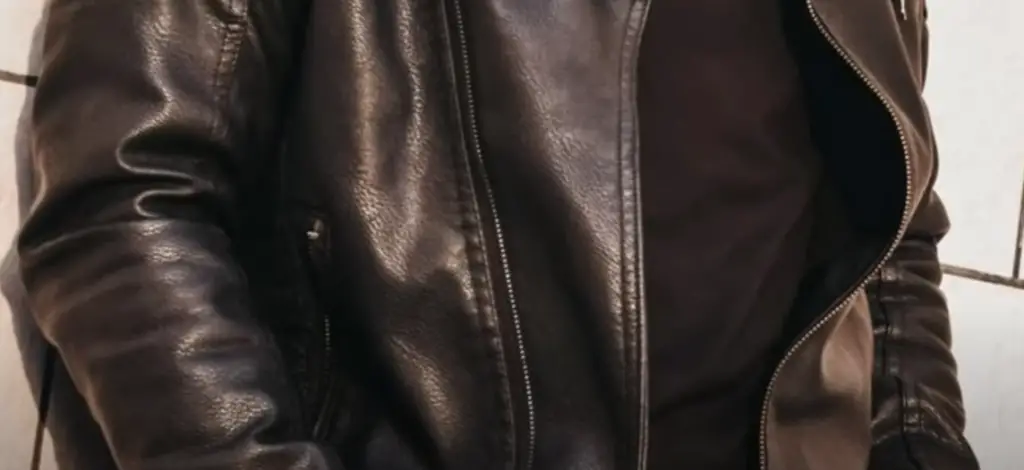
Prevent Sun Damage and Heat Exposure
Exposure to the sun’s rays can inflict severe damage on leather, leading to dryness and cracking with time. To safeguard your leather jacket from such harm, store it away from direct sunlight when not in use. Moreover, it is advisable to refrain from wearing it during hot weather conditions.
To ensure the longevity of your leather jacket, especially when spending prolonged periods outdoors on sunny days, it is advisable to shield it from the sun’s rays by covering it with a lightweight raincoat or other protective outerwear. This precautionary measure will help prevent cracking caused by heat exposure. [2]
Proper Storage Solutions
To ensure the longevity of your leather jacket, proper storage is crucial. When you’re not wearing it, store it in a cool and dry location, shielded from direct sunlight and heat. Avoid damp or humid areas as they can lead to cracking of the material over time.
To enhance the protection of your leather jacket, consider investing in an airtight container or bag for storage. This will effectively prevent dust and other pollutants from causing damage to the material over time. Furthermore, preserving its shape and structure can be achieved by stuffing the jacket with tissue paper or acid-free newspaper before storing it away.
By adhering to these storage recommendations, you can guarantee that your leather jacket will maintain its impeccable appearance for years to come!
Identifying Leather Jacket Types
It’s important to identify the type of leather used in your jacket before attempting to care for it. Different types of leather require different cleaning and conditioning products, so knowing which type you have is essential for proper care.
Leather jackets are usually made from either full-grain or top-grain leather. Full-grain leather is the highest quality variety, while top-grain is a slightly lower quality. When shopping for cleaning and conditioning products, make sure to choose ones that are specifically designed for the type of leather used in your jacket. [3]
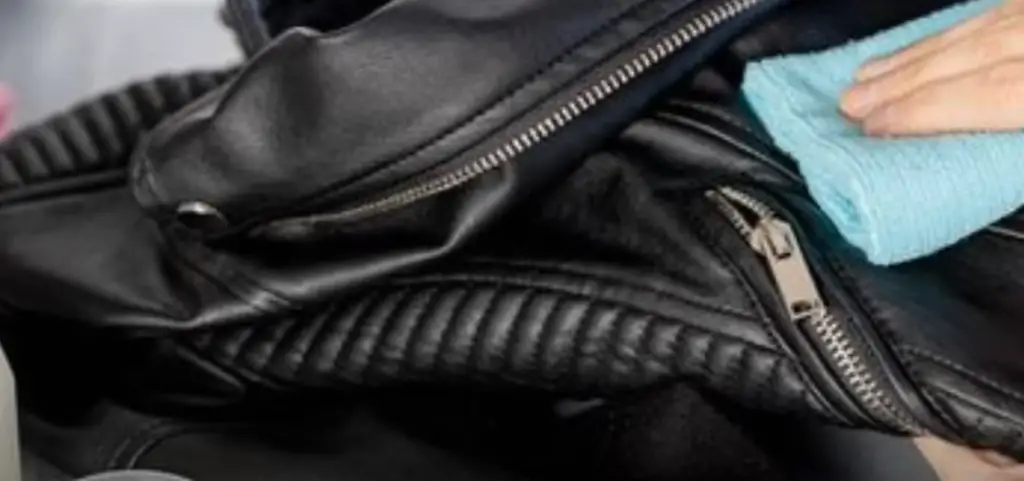
Repairing Cracked Leather
If you observe any indications of cracking or dryness in your leather jacket, there are various measures you can take to assist in restoring the material. To address minor cracks, applying a leather conditioner and allowing it to penetrate the material can be beneficial. For more significant cracks, it is advisable to mend them by sewing with an appropriate thread.
In addition to fixing cracked leather, it’s important to be aware of any signs of fading or discoloration. If you happen to notice these issues on your jacket, there are specialized dyeing and cleaning products that can assist in restoring the original color and shine of your leather jacket.
Professional Care
If you’re unable to restore your leather jacket yourself, it may be beneficial to have a professional leather care specialist take a look at it. These professionals can provide an expert opinion on the best course of action for restoring or repairing any damage and can often apply treatments that are not available to the general public.
By having your leather jacket professionally cared for, you can ensure that it’s in the best shape possible for years to come! Additionally, regular maintenance and proper storage can help extend the life of your leather jacket and keep it looking great. So don’t forget to take care of your beloved outerwear item and enjoy its warmth and protection during cold weather!
Choosing the Right Leather Jacket
The type of leather and the quality of a jacket can determine how well it will last and retain its shape over time. Natural leather is generally considered to be more durable than synthetic materials, as natural fibers are stronger and less prone to cracking or tearing. Leather jackets should also generally have a relatively thick lining in order to protect the material from any weather elements or general wear and tear.
When selecting a leather jacket, consider the weight of the material as well as the quality of craftsmanship. Heavier jackets are more likely to last longer and retain their original shape better than lighter-weight pieces. Additionally, look for a jacket with reinforced or double stitching on all seams, as this will ensure that it holds up over time. [4]
Pros and Cons of Leather Jackets
Leather jackets are a timeless fashion statement that have been around for years. From classic biker styles to modern takes on the trend, leather jackets offer a classic aesthetic and long-lasting durability that make them worth considering as an outerwear option.
However, as with any type of clothing, there are both pros and cons that should be taken into consideration when selecting a leather jacket.
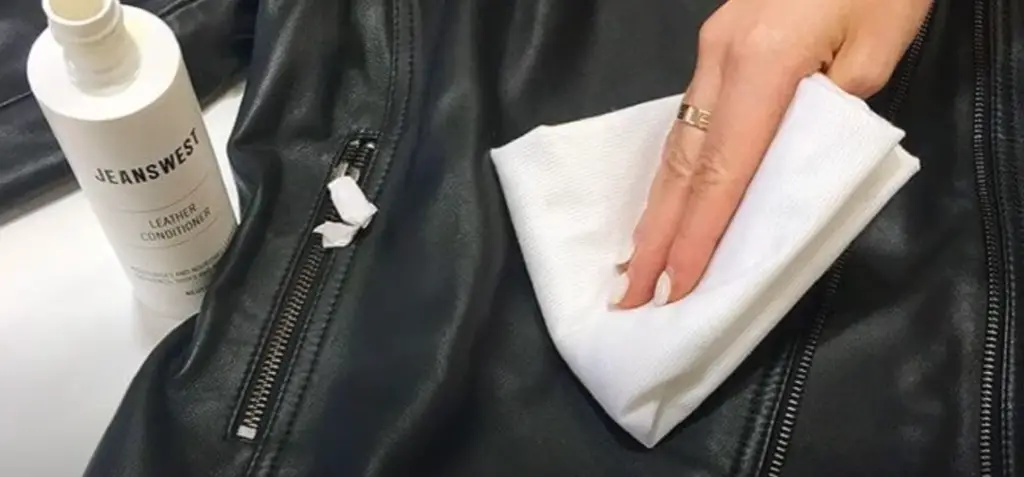
Pros of Leather Jackets
- Durable: Leather jackets are designed to be incredibly durable, providing long-lasting wear even in the toughest of conditions. It is one of the strongest fabrics available, making it perfect for long-term use and extreme weather.
- Waterproof: When treated with waterproofing products, leather jackets can be an effective barrier against both wind and rain. This makes them perfect for outdoor activities or unpredictable weather conditions.
- Versatile: Leather jackets come in a variety of colors, styles, and cuts, making it easy to find one that fits your individual style or preferences. They can also be dressed up or down depending on the occasion.
Cons of Leather Jackets
- Price: Leather jackets tend to be more expensive than other types of outerwear due to their material and construction. This might not be the best option for those on a budget.
- Maintenance: Leather jackets require more maintenance than other fabrics, including regular cleaning and conditioning in order to keep them from cracking or fading.
- Heat Retention: Leather is a naturally insulating material, making it difficult to stay cool in warm temperatures. This can make the leather jacket uncomfortable during the hotter months of the year. [5]
FAQs
What causes a leather jacket to crack?
The most common reason a leather jacket may crack is due to improper care and maintenance. Leather needs to be properly conditioned in order to maintain its suppleness and prevent cracking. Carelessness, such as leaving the jacket in direct sunlight or sitting on it while wearing jeans, can cause the leather to dry out and become brittle over time.
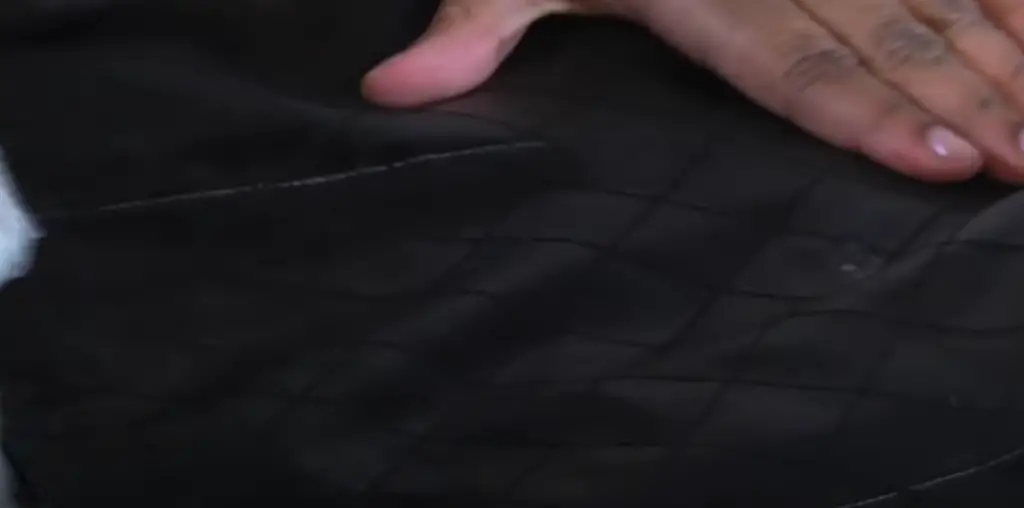
How can I keep my new leather jacket from cracking?
The best way to prevent your new leather jacket from cracking is to take proper care of it. This includes regularly conditioning the leather with a quality conditioner, storing the jacket in a cool and dry place when not in use, and avoiding leaving it out in direct sunlight. Additionally, try not to wear clothing that may rub or abrade against the leather, as this can cause damage over time.
How often should I condition my leather jacket?
Most experts recommend conditioning your leather jacket every 6-12 months in order to keep it looking its best. However, if the leather is exposed to harsh conditions or excessive wear and tear, then more frequent conditioning may be necessary. Additionally, always follow the manufacturer’s instructions for best results.
Is it possible to repair a cracked leather jacket?
In some cases, it is possible to repair a cracked leather jacket using special leather repair kits. Depending on the severity of the crack, these kits can help restore the leather’s suppleness and prevent further cracking and damage. However, if the damage is too severe or widespread, then it may be best to invest in a new leather jacket.
Can I machine-wash my leather jacket?
It is not recommended to machine-wash your leather jacket as this can cause further damage or even ruin the material. Instead, use a damp cloth and mild detergent to gently clean any dirt or stains from the surface of the leather. Always follow the manufacturer’s instructions for best results.
What is the best way to store a leather jacket?
The best way to store a leather jacket is in a cool, dry place away from direct sunlight. You should also use hangers or storage bags that are designed specifically for leather jackets in order to maintain their shape and prevent any creasing or cracking. Additionally, make sure to keep the leather moisturized by regularly conditioning it. This will help prevent any cracking or damage caused by extreme temperatures or humidity levels.
What are the best leather conditioners available in the market?
There are many different leather conditioners available in the market, ranging from natural oils and waxes to commercial products. The best option will depend on the type of leather you have and your personal preference. Some popular brands include Bickmore Leather Conditioner, Lexol Leather Conditioner, and Chamberlain’s Leather Milk. It is always best to follow the manufacturer’s instructions for best results.
What is the difference between a leather jacket and a faux leather jacket?
The main difference between a leather jacket and a faux leather jacket is the material they are made from. Leather jackets are made from real animal hides, while faux leather jackets are made from synthetic materials such as polyurethane or plastic. This makes faux leather jackets cheaper and more animal-friendly, but they are generally not as durable or long-lasting as real leather. Additionally, some people may have allergies to the materials used in faux leather which should be taken into consideration when making a purchase.
Are there any alternatives to leather jackets?
There are many alternatives to leather jackets available on the market today. These include synthetic materials such as nylon, polyester, and acrylic. These fabrics are often more lightweight than leather, making them perfect for warmer weather. Additionally, there are also vegan-friendly options such as waxed cotton and microfiber that offer a similar look and feel to leather jackets without the animal hide.
How can I make my leather jacket last longer?
One way to make sure your leather jacket lasts a long time is by taking proper care of it. Make sure to spot clean any stains as soon as possible with a damp cloth and use a leather conditioner to keep the material soft and supple. Additionally, store your leather jackets in a cool, dry place away from direct sunlight or heat when not in use so that it does not become brittle or cracked. Finally, be mindful of what you wear your jacket with. Avoid fabrics such as denim or other heavy materials that may rub against the leather and cause damage over time.
Does weather affect the condition of a leather jacket?
Yes, weather can definitely have an effect on the condition of a leather jacket. If exposed to excessive heat and humidity for long periods of time, the leather will become dry and brittle which can lead to cracking or fading. Additionally, cold temperatures can also cause the leather to become stiffened or hardened. To keep your jacket in optimal condition, make sure to store it away when not in use and apply a leather conditioner regularly.
What should I look for when buying a new leather jacket?
When shopping for a new leather jacket, make sure to inspect the material closely. Look out for any signs of cracking or discoloration that could indicate it has been improperly cared for. Additionally, pay attention to the stitching and zippers to make sure they are strong and secure. Finally, always check for tags or labels on the jacket that indicate it is made from genuine leather. This will ensure you get a good quality jacket that will last a long time.
How can I tell if my leather jacket is real?
The easiest way to tell if your leather jacket is genuine is to look for a tag or label indicating the material is made from genuine leather. Additionally, you may also want to inspect the texture and feel of the material as real leather will be soft and supple while faux leather will tend to be stiffer. Finally, if possible, try to get a second opinion from an experienced leather specialist who can verify if your jacket is indeed real.
Can I use home remedies to prevent my leather jacket from cracking?
Yes, there are some home remedies that can help prevent your leather jacket from cracking. One option is to mix a teaspoon of olive oil with a dash of vinegar and apply it on the surface of the leather in order to keep it moisturized. Additionally, beeswax or lanolin can also be used on the material to add an extra layer of protection. However, these home remedies should only be used as a last resort as commercial leather conditioners may be more effective.
Is professional leather care necessary?
Professional leather care is not always necessary, but it can definitely help extend the life of your leather jacket. Professional cleaners will be able to deep clean and condition the material correctly in order to keep it looking like new. Additionally, they may also be able to provide advice on how best to take care of your specific type of leather. However, this route can be expensive so it is best to consider if the cost is worth it before going ahead.
Can I wear my leather jacket in the rain?
While leather jackets are generally waterproof, it is best to avoid wearing them in the rain when possible. Water and humidity can cause the material to become stiff or brittle which can lead to cracking over time. Additionally, the dye used on leather jackets may be damaged by prolonged exposure to water. If you do need to wear your leather jacket in the rain, make sure to apply a waterproofing agent beforehand and dry the jacket off as soon as possible after it has been exposed to moisture.
Useful Video: How to Protect a Leather Jacket From Cracking : Fashion Styles & Maintenance
Conclusion
Leather jackets require a lot of care and maintenance in order to stay looking their best. Regular cleaning and conditioning will help to keep the leather supple and prevent cracking or tearing. Additionally, avoiding contact with moisture and storing your jacket in a cool, dry area away from direct sunlight can help to extend its life even further. With proper care, you’ll be sure to have a leather jacket that looks great and lasts for many years.
References:
- https://www.leathercult.com/blog/how-to-prevent-your-leather-jacket-from-cracking/
- https://www.lussoleather.com/blogs/guide/how-to-protect-leather-jacket-from-cracking
- https://aradbranding.com/en/how-to-care-leather-jacket/
- https://leatherknowledge.com/reasons-why-leather-jackets-crack/
- https://www.dcleaners.com/blog/how-to-care-for-and-clean-a-leather-jacket/

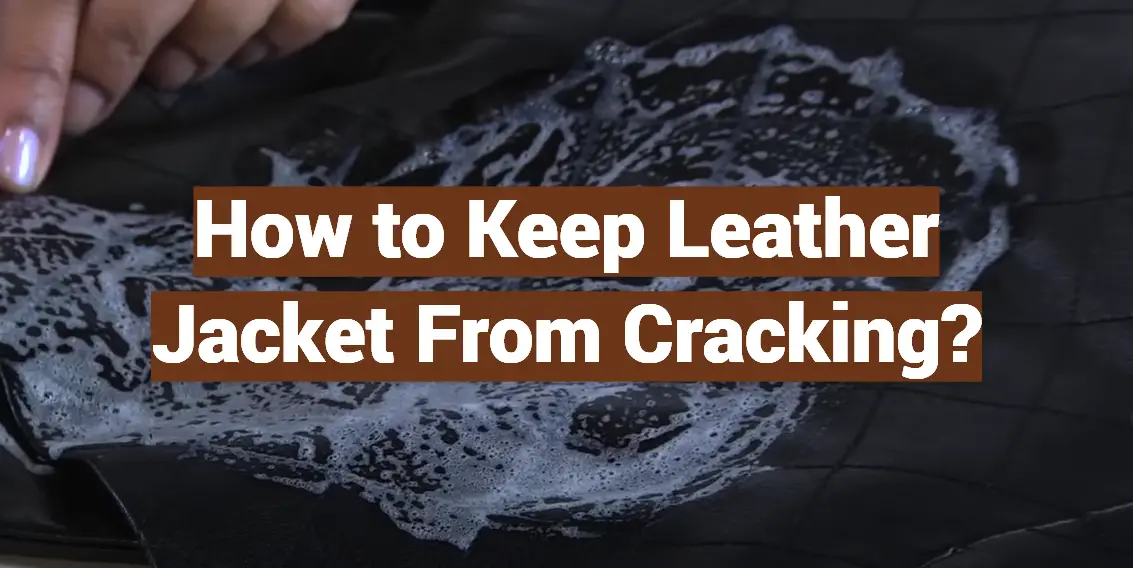
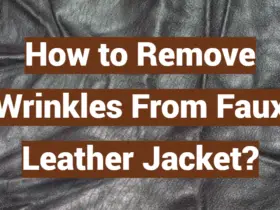




Leave a Reply